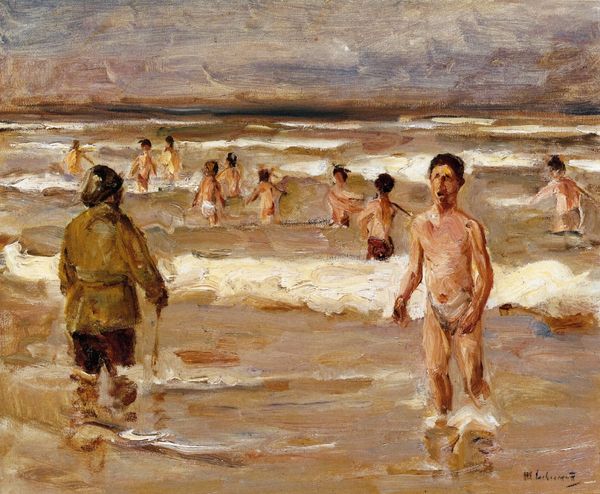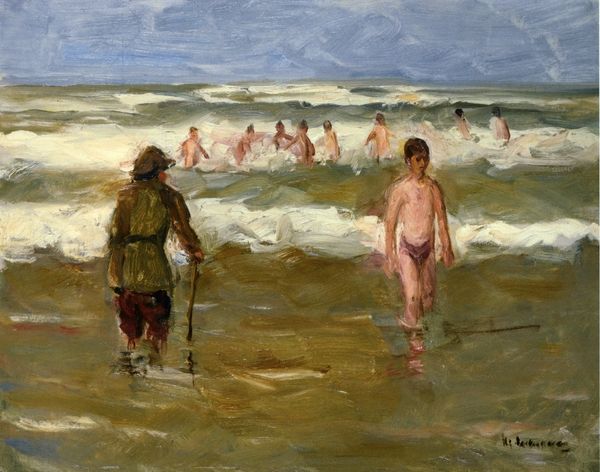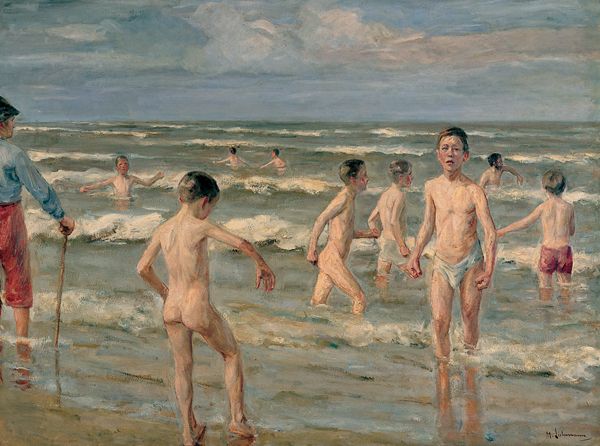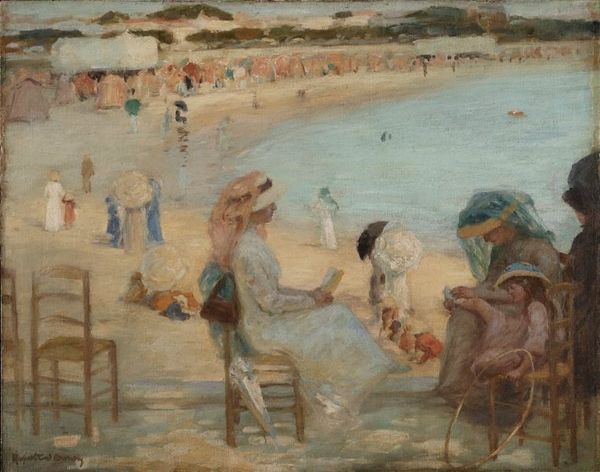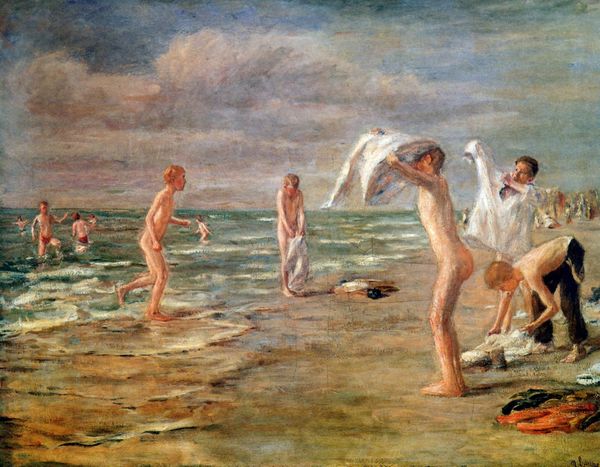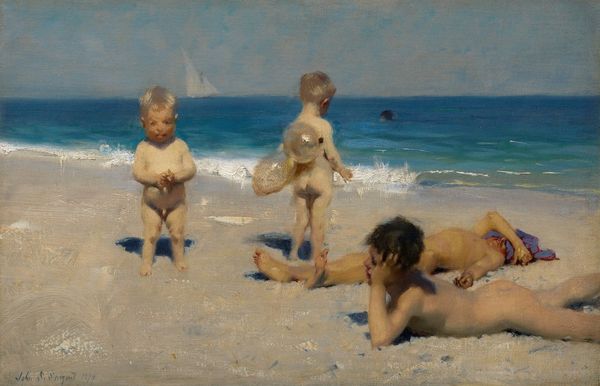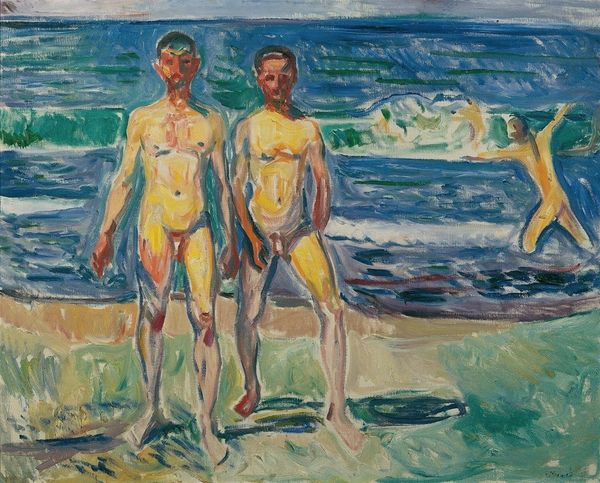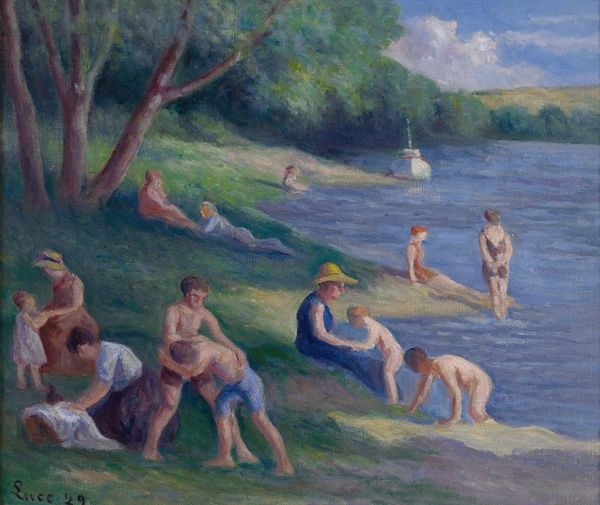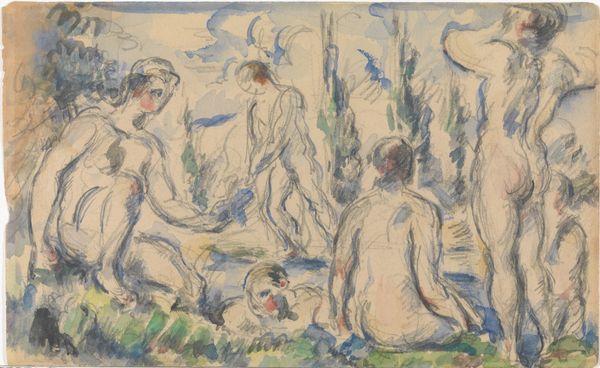
Dimensions: support: 629 x 911 mm frame: 826 x 1085 x 99 mm
Copyright: CC-BY-NC-ND 4.0 DEED, Photo: Tate
Curator: Max Liebermann's "After Bathing," currently housed at the Tate, presents a scene of boys on a beach. Editor: The texture is striking; the canvas feels almost sculpted, capturing a fleeting moment of carefree energy. Curator: Indeed. Liebermann, born in 1847, was a German-Jewish painter and printmaker, and this work, while undated, reflects his engagement with Impressionism and its broader socio-political context. Editor: The composition, though seemingly informal, relies on structured arrangement of forms and light—a very keen understanding of space and form. The figures are placed to guide the eye, yes? Curator: Exactly, and we might consider how these representations challenge or reinforce existing norms, particularly around representations of masculinity and leisure. Editor: I think I agree. The semiotic interplay between the bodies and the landscape invites deeper reading. Curator: It's an image that resonates across time, prompting us to reflect on themes of youth and freedom within specific cultural frameworks. Editor: A testament to the lasting power of visual language.
Comments
tate 6 months ago
⋮
http://www.tate.org.uk/art/artworks/liebermann-after-bathing-t03077
Join the conversation
Join millions of artists and users on Artera today and experience the ultimate creative platform.
tate 6 months ago
⋮
From very early in his career Liebermann frequently painted children, particularly orphans, either playing or working. His earliest works on the theme of childhood were painted at a time when Liebermann was influenced by Dutch painters of the 17th century, particularly Frans Hals. His first paintings of bathers were made in the mid-1870s. He remained deeply attached to Holland throughout his life, frequently visiting the coast around Scheveningen. This is the second of two oils, based on sketches Liebermann made on the Dutch coast in 1903. The figure in the middle appears rather stiffly posed, while the other boys are depicted more naturalistically. Gallery label, August 2004
